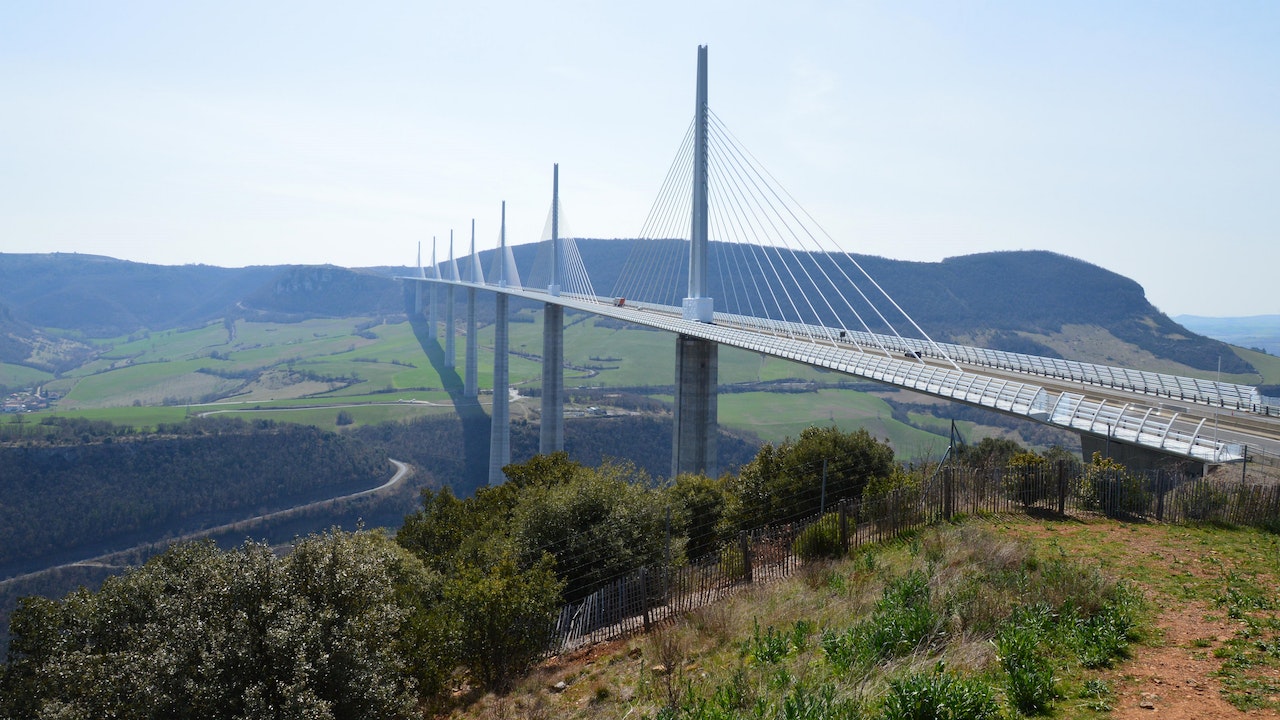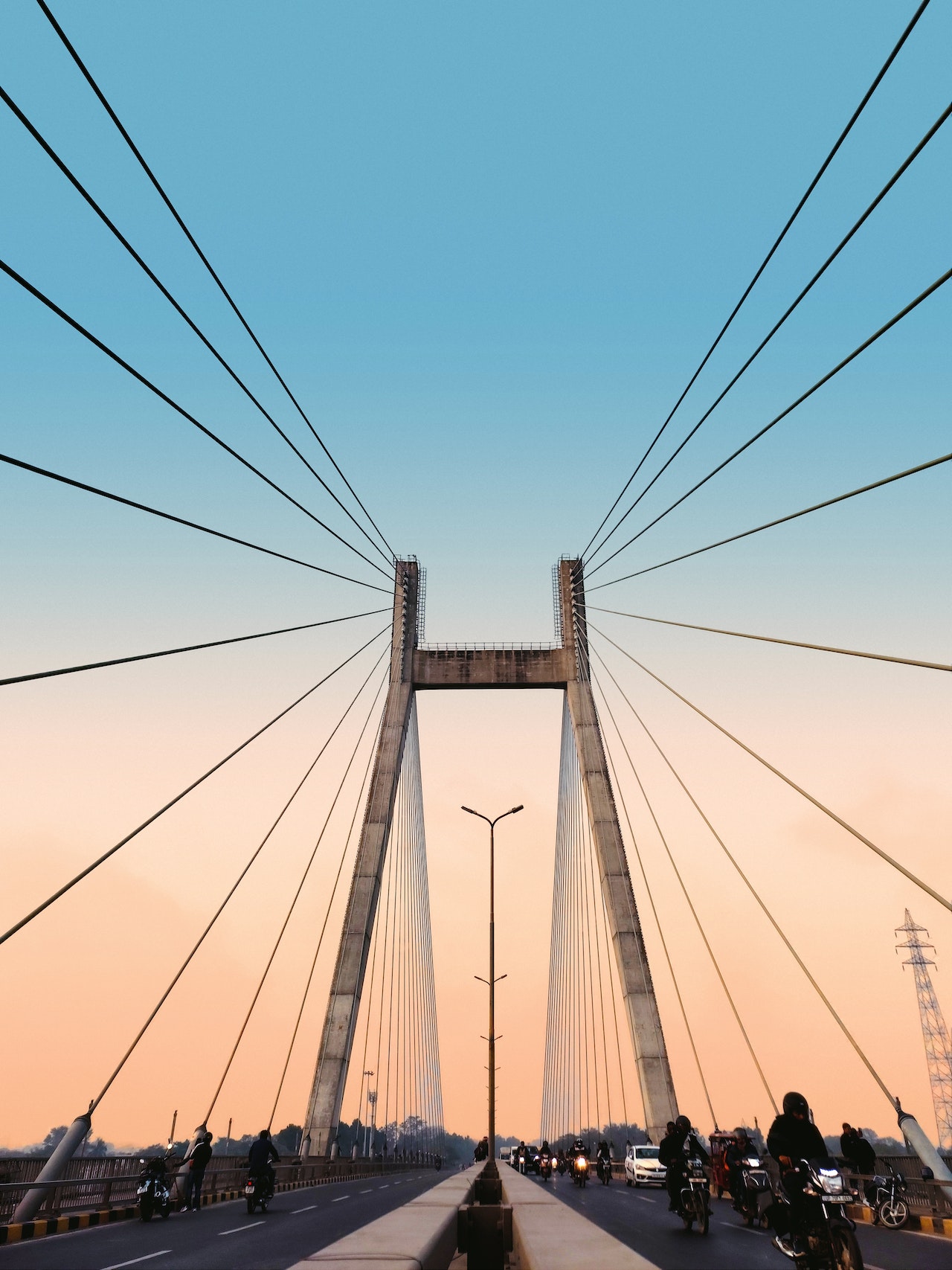The Elegance and Engineering of Cable-Stayed Bridges

Introduction
Cable-stayed bridges are among the most impressive and iconic structures in the world. With their soaring pylons and sweeping cables, they are a testament to the ingenuity and creativity of engineers and architects alike. From the majestic Millau Viaduct in France to the stunningly futuristic Russky Bridge in Russia, cable-stayed bridges have become landmarks and symbols of the cities and countries where they stand.
One of the most distinctive features of cable-stayed bridges is their cable system. Unlike suspension bridges, which use cables to hang the bridge deck from suspension cables, cable-stayed bridges support the deck with cables that run directly from the pylon to the deck. This design provides exceptional strength and stability while allowing for longer spans and more graceful curves than traditional bridge designs.
Another key advantage of cable-stayed bridges is their flexibility in design. They can be adapted to a wide range of situations, from spanning deep valleys and wide rivers to navigating busy urban environments. This versatility has made them a popular choice for many of the world's most challenging engineering projects.
Components of Cable-Stayed Bridges
Cable-stayed bridges consist of several key components. Each of these components plays a critical role in the overall design and functionality of the bridge. Here are some of the main components of cable-stayed bridges:

1. Deck Slab
The deck slab of a cable-stayed bridge is the top surface of the bridge that supports traffic and other loads. It is a critical component of the bridge's structure, as it must be able to withstand heavy loads and provide stability and durability over a long period of time.
The deck slab is typically made of reinforced concrete or steel, although other materials such as composite materials can also be used. The thickness of the deck slab depends on the length and width of the bridge, as well as the anticipated traffic load.
2. Pylon
The pylon serves as the primary support structure for the cables that hold up the deck of the bridge. It is typically made of reinforced concrete or steel, and its height can vary depending on the length and width of the bridge.
The pylon is designed to transfer the load of the deck to the foundation, which is usually located deep in the ground. It accomplishes this by distributing the load of the cables across its entire height, which can be up to several hundred feet in some cases. The pylon is also designed to be aerodynamic to reduce wind resistance, which can cause the bridge to sway and create stresses on the cables.
In addition to providing support for the cables, the pylon may also serve as a landmark or visual feature of the bridge. Many cable-stayed bridges are designed to be visually striking, and the pylon can play a key role in achieving this goal.
The design of the pylon can vary widely depending on the specific requirements of the bridge. Some pylons are designed as simple, tapered structures, while others may incorporate complex curves and angles to create a more visually interesting shape.
3. Cables
Cables are a critical component of cable-stayed bridges, providing the primary support for the bridge deck. They are typically made of high-strength steel wires or strands, and their size and number depend on the length and width of the bridge, as well as the anticipated traffic load.
The cables are anchored to the deck at specific points and extend upward to connect to towers or pylons. The number and placement of the cables depend on the bridge design and engineering considerations, such as the distribution of weight and load. The cables are under constant tension, which helps to keep the deck stable and prevent it from moving or swaying.
4. Anchorages
Anchorages secure the cables to the bridge deck and provide the necessary tension to support the weight of the bridge. Anchorages are typically located at the ends of the bridge and are designed to transfer the tensile forces from the cables to the bridge structure.
There are two main types of anchorages used in cable-stayed bridges: dead-end anchorages and saddle anchorages. Dead-end anchorages are used for cables that terminate at the end of the bridge, while saddle anchorages are used for cables that pass over the tower or pylon and continue on to the other side of the bridge.
5. Foundations
The foundation of a cable-stayed bridge typically consists of two main components: the pile and the footing. Piles are long, slender columns that are driven deep into the ground to provide support for the bridge. The number and size of the piles depend on the size and weight of the bridge, as well as the soil conditions and load-bearing capacity of the ground.
The footing is a large, flat concrete or steel structure that sits on top of the piles and distributes the weight of the bridge evenly across them. The footing is designed to prevent the piles from sinking or shifting, and to resist lateral loads caused by wind or seismic activity.
Principle of Cable-Stayed Bridges

The principle of a cable-stayed bridge is to distribute the weight of the bridge and its traffic loads through a series of cables that are anchored to tall pylons, which in turn transfer the load to the foundation. The cables are tensioned to provide support and stability to the bridge deck, while the pylons provide vertical support and lateral resistance against wind and seismic activity.
The principle is based on the concept of tension and compression forces. The cables, which are made of high-strength steel, are placed in tension, or under pulling forces, and are anchored to the pylons. The pylons are designed to resist the compression forces that result from the weight of the bridge and the traffic loads.
The deck, which is the roadway portion of the bridge, is supported by the cables and hangs from the pylons. The deck can be either a simple beam or a more complex truss structure, depending on the design requirements and the load capacity of the bridge.
Conclusion
Cable-stayed bridges are remarkable feats of engineering that embody the perfect balance of form and function. They not only provide essential transportation infrastructure but also stand as iconic landmarks that represent the ingenuity and innovation of human progress.
They are also a testament to the power of collaboration and teamwork. From the initial concept to the final construction, engineers, architects, and construction crews work together to create a structure that is not only safe and efficient but also beautiful and inspiring.
As we look to the future, cable-stayed bridges will continue to play a vital role in connecting people and communities and supporting economic growth and development.